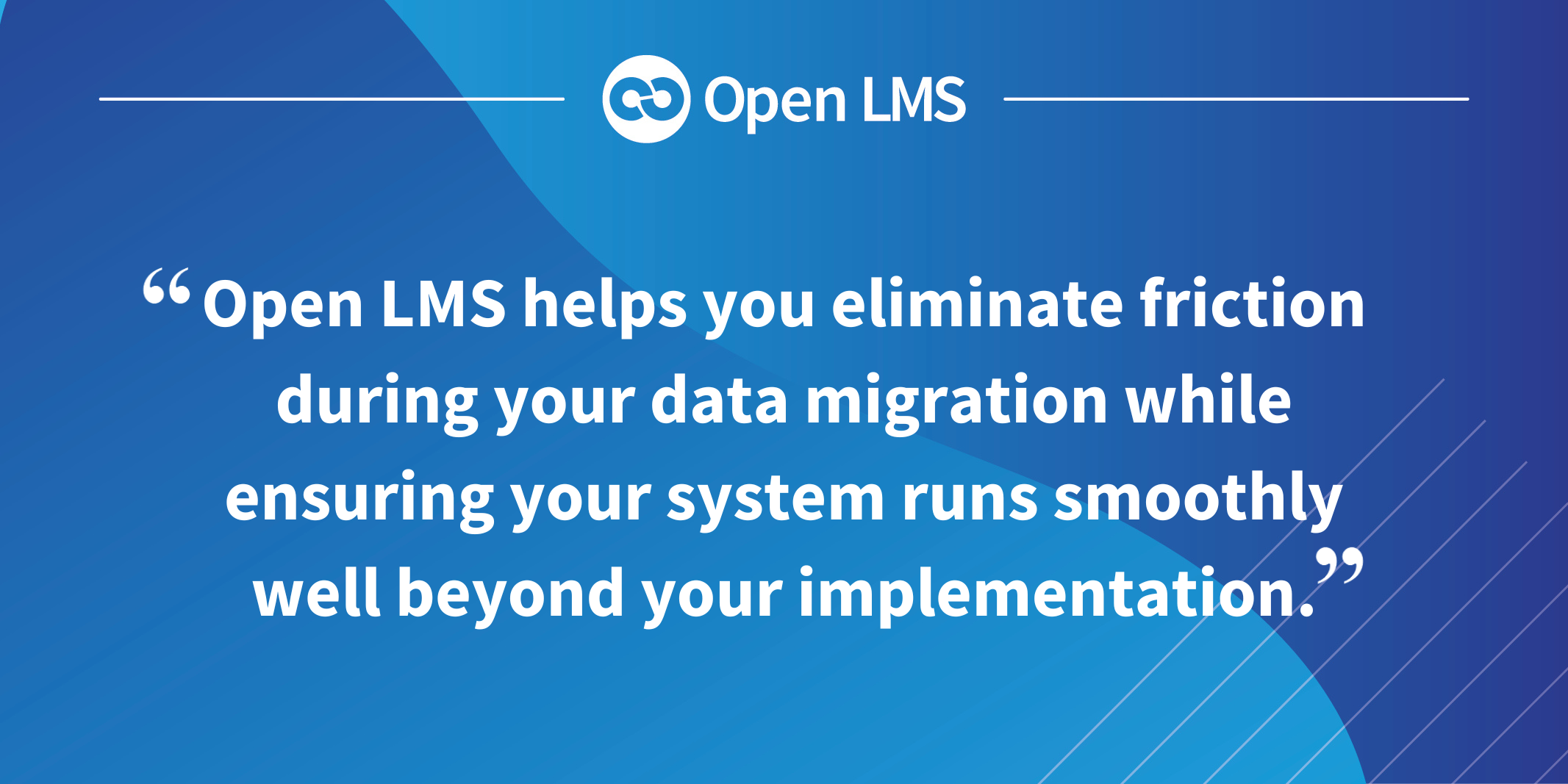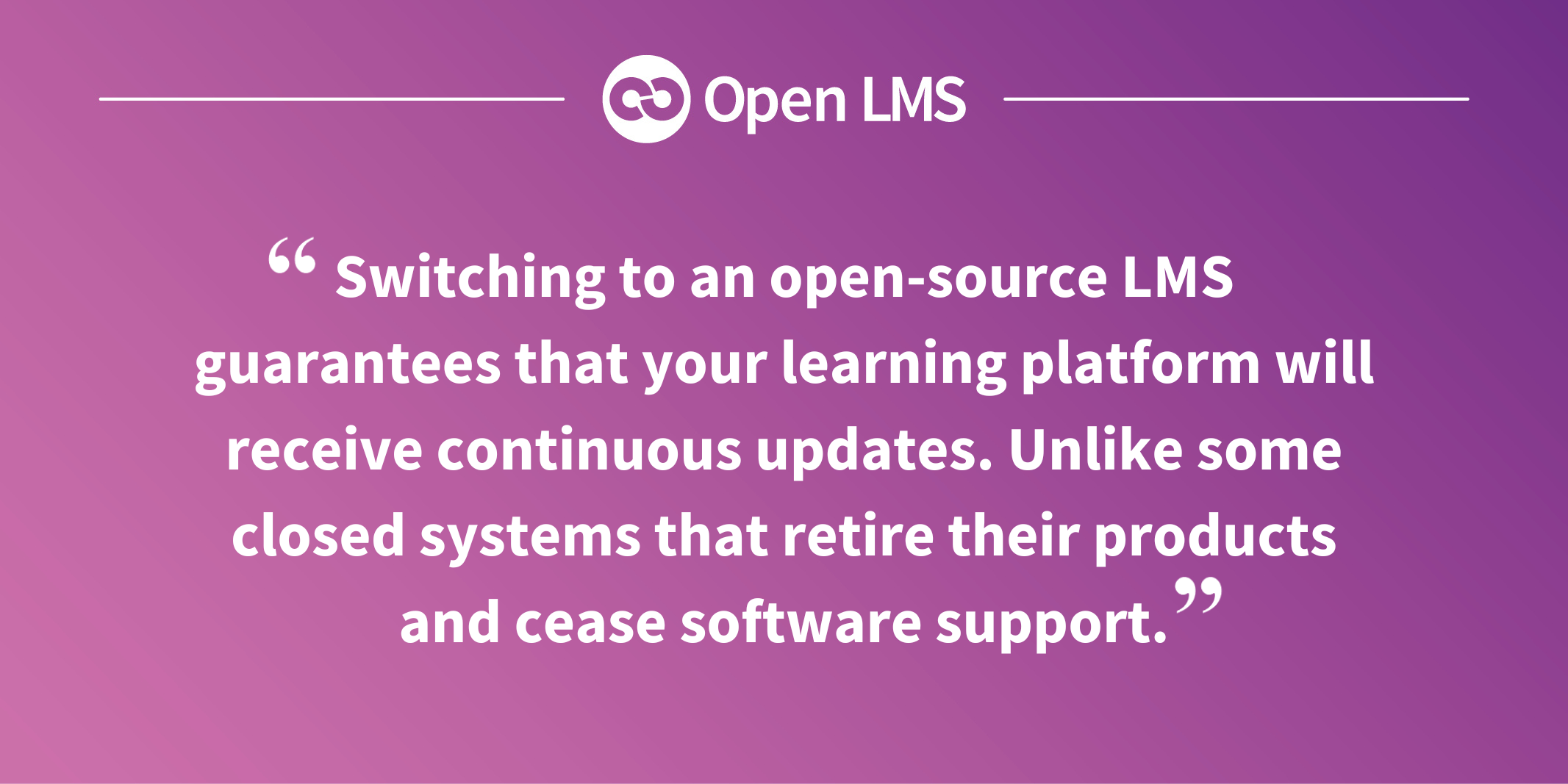Seamless Integrations, Seamless Transition: How Open LMS Works With Your Existing Tech Stack
Migrating to a new learning platform can feel like a daunting task, especially when your organization or institution has an established technology ecosystem. Fortunately, the right LMS partner makes data migration easy while seamlessly integrating with your existing tech stack, allowing you to continue using the tools that work for you.
Whether you’re managing learning for a university with thousands of students or professional development and compliance training programs for a corporate enterprise, Open LMS can be customized to your exact specifications. Our goal is simple: make your LMS transition frictionless, your data connections reliable, and your administrators’ lives easier.
READ AN OPEN LMS SUCCESS STORY | ‘How Sodimac Colombia Overcame an Unexpected LMS Migration and Boosted Training Delivery by 25%’

Why Integrations Matter More Than Ever
Today’s learning ecosystems are more interconnected than ever. For higher education institutions, the LMS sits at the center of a digital campus that includes student information systems (SIS), authentication services, video conferencing platforms, and assessment tools. In corporate environments, the LMS must connect seamlessly to HR systems, talent management software, CRMs, and external learning content providers.
When integrations work well, data flows automatically between systems, reports are accurate and up-to-date, and users can focus on learning rather than logistics. Seamless integrations create a unified learning experience for all users of your platform. When integrations fail, however, it can lead to administrators spending countless hours troubleshooting issues, manually entering data, and reconciling records across systems.
That’s where Open LMS shines. Because our platform is built on the world’s most widely used open-source LMS, our clients get all the benefits of Moodle™ alongside our robust automation, advanced integration capabilities, and dedicated support services. Open LMS helps you eliminate friction during your data migration while ensuring your system runs smoothly well beyond your implementation.
A Streamlined Migration Experience
Migrating to a new LMS is often the most stressful part of adopting new learning technology, but it doesn’t have to be. At Open LMS, migration is treated as a partnership, not a project. The details of your specific migration process will depend on whether you’re moving from a closed system or another open-source platform. Still, the general steps are similar for every new client.
Data migration begins with a discovery phase, during which our implementation team works closely with your IT and learning design teams to understand your current systems, content formats, and integration requirements. Together with our experts, you’ll decide how many courses and users you want to migrate.
You’ll also discuss your current authentication method and any external integrations you’d like to keep using with Open LMS. Our team works closely with you to customize an LMS solution tailored to your needs, ensuring data integrity and minimizing disruptions to facilitate a seamless transition.
Open LMS works with you on your:
- User and enrollment data migration, ensuring that users, roles, and enrollments are seamlessly mapped and verified
- Course and content migration, showing you how to create course shells and import your course materials
- System validation, conducting end-to-end testing to confirm functionality and integrations before launch
- Training and onboarding, providing detailed documentation and workshops for administrators and faculty, or training leads
The result: a smooth, low-stress transition where you retain your data, your structure, and your learners’ confidence.
LEARN MORE ABOUT MIGRATING YOUR LMS | ‘5 Reasons Why You Should Switch from Self-Hosted Moodle™ to Open LMS’

Moving From a Closed to an Open System
If you’re moving from a closed-source platform and you’re not using tools like LTI or SCORM, your initial Open LMS implementation will be slightly more complex. This is due to the nature of closed-source platforms. They use proprietary software, meaning it’s highly likely that you’ll need to create new course content.
However, moving to an open-source platform gives you access to an abundance of tools, plugins, and features created by a global community of developers, such as the H5P integration. H5P is an open-source software that allows you to create interactive content like quizzes, videos, and presentations, which can then be embedded into your Open LMS course. And if you choose Open LMS specifically, you’ll also get exclusive tools like the Personalized Learning Designer, Open Reports Engine, Conduit, and more. The Open LMS team can assess external plugins or tools that you wish to integrate into your Moodle™ site to ensure the new integration is safe and effective.
Additionally, switching to an open-source LMS essentially guarantees that your learning platform will receive continuous updates. The creators of closed systems may retire their products and cease software support when they are no longer profitable—this is not a concern for open-source LMSs. Better still, Open LMS’s platform gets regular internal updates in addition to any software fixes initiated in standard Moodle™. You won’t need to worry about your system becoming outdated or obsolete.
Integration Without the Headaches
Once migration is complete, integration becomes the key to long-term success. Open LMS integrates easily with the systems your organization already depends on—creating a connected ecosystem where data flows securely, automatically, and accurately.
1) Student Information and HR Systems
For higher education, Open LMS integrates directly with your SIS, automating course creation, user enrollment, and grade synchronization.
For corporate organizations, these same principles apply, particularly with HRISs and talent platforms. Automated data syncs ensure employee profiles, job roles, and learning paths remain accurate across systems—saving your administrators from hours of manual updates while also reducing compliance risks.
2) Learning Tools and Content Providers
Open LMS supports LTI, SCORM, and xAPI standards, allowing you to integrate with thousands of learning tools and third-party content providers. Whether your team relies on external training modules, digital libraries, or simulation tools, nearly everything can be integrated within a single, centralized LMS experience.
This flexibility is crucial for organizations operating in blended or hybrid learning environments. Instructors can mix Open LMS-native activities with apps and extensions that are all connected through secure, standards-based integrations.
3) Authentication and Access Management
Open LMS supports SSO (Single Sign-On) integrations using SAML2 and OAuth2, so learners can access training and courses using existing credentials. This reduces password fatigue and security risks while granting IT teams centralized control over user access.
4) Analytics and Data Synchronization
By integrating with your analytics tools, Open LMS ensures leadership has a holistic view of learning outcomes and engagement metrics. Additionally, Open LMS’s robust Open Reports Engine includes data visualization tools that provide granular insights into your learning platform and user activities.
This gives decision-makers—whether they’re deans or HR directors—data-driven insights to inform curriculum design, workforce development, and organizational strategy.
READ MORE ABOUT INTEGRATIONS | ‘How Open LMS’s Rigorous Approach to LMS Plugins Provides Security, Compliance, and Partnership’
The Bottom Line: A Frictionless Learning Ecosystem
Whether you’re managing academic programs, compliance training, or workforce upskilling, your LMS should connect effortlessly with the systems that power your organization.
With Open LMS, migration doesn’t mean disruption—it means evolution. Our platform is designed to work with your existing tech stack, not against it, so you can focus on what truly matters: delivering engaging learning experiences that drive performance and growth.
Open LMS’s team of experts is here to simplify your LMS migration and help you build a connected, scalable, and future-ready learning ecosystem. Request a demo today to learn how we can support you, or take a quick tour of our platform to see Open LMS in action right now.